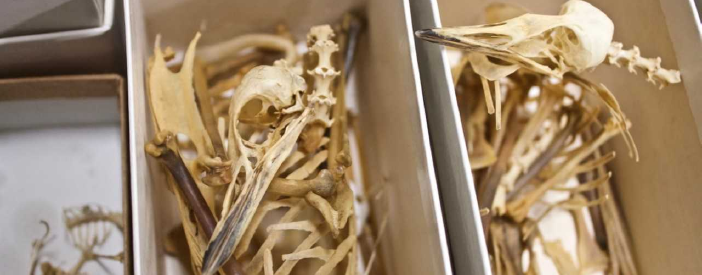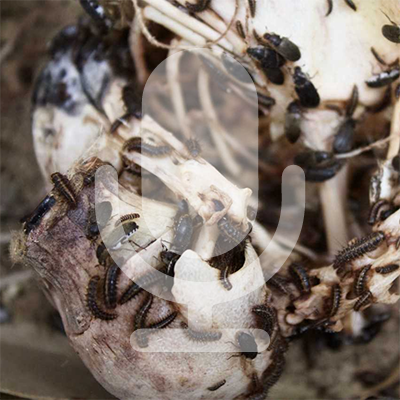Episode 20: Dermestid Beetles

Image: Horned Grebes Bones: By Elizabeth Wommack
Vertebrate bones are a treasure trove of information. From what an animal eats, to how they move, or how they died, scientists can extract myriad data from a skeleton. But how do you prepare the skeleton of an animal? At the University of Wyoming Museum of Vertebrates, we use dermestid beetles to help clean skeletons of all different types of animals. The tradition of using colonies of dermestids started at the Museum of Vertebrate Zoology at the University of California, Berkeley in the 1920s. Today museums around the world use dermestids to clean skeletons of all shapes and sizes. It can take two weeks to clean a bird like a Horned Grebe. During this time the hundreds of feeding beetles sound like a down-pour on a cabin roof as they eat away at the meat around the bones. After they are cleaned, the skeletons will go into the museum, ready for researchers here at the University of Wyoming and around the world. With your WyoBio Minute I am Elizabeth Wommack.
For more information on the work of Elizabeth Wommack and the University of Wyoming Museum of Vertebrates visit their website at: http://uwymv.org/



